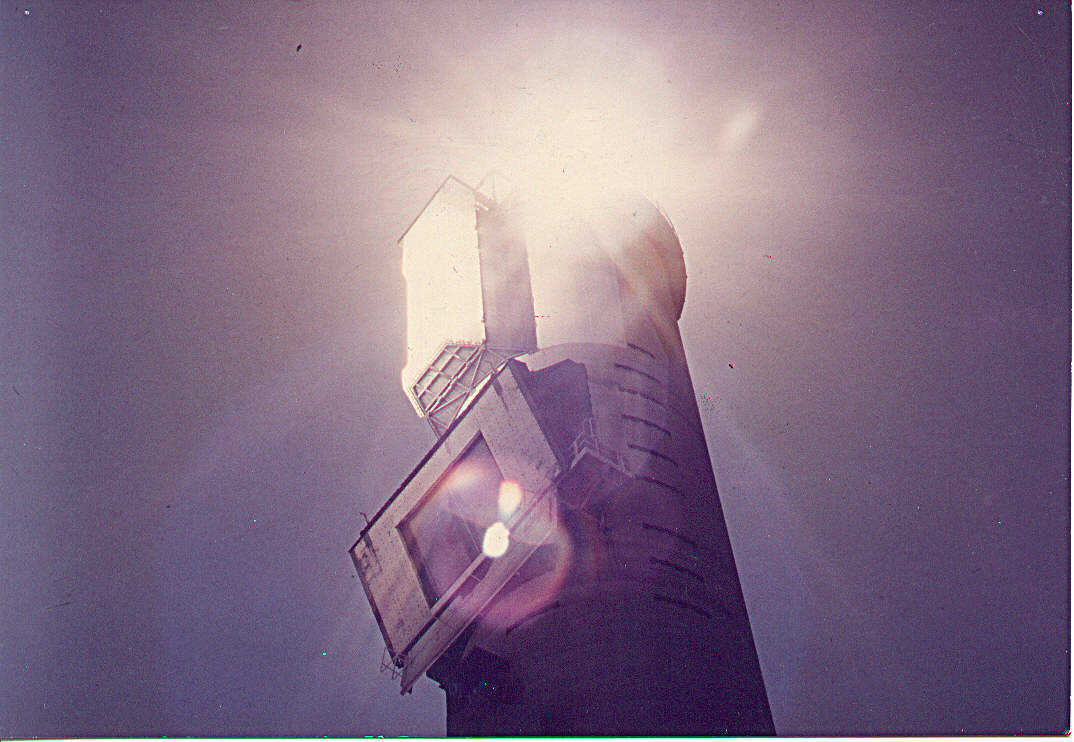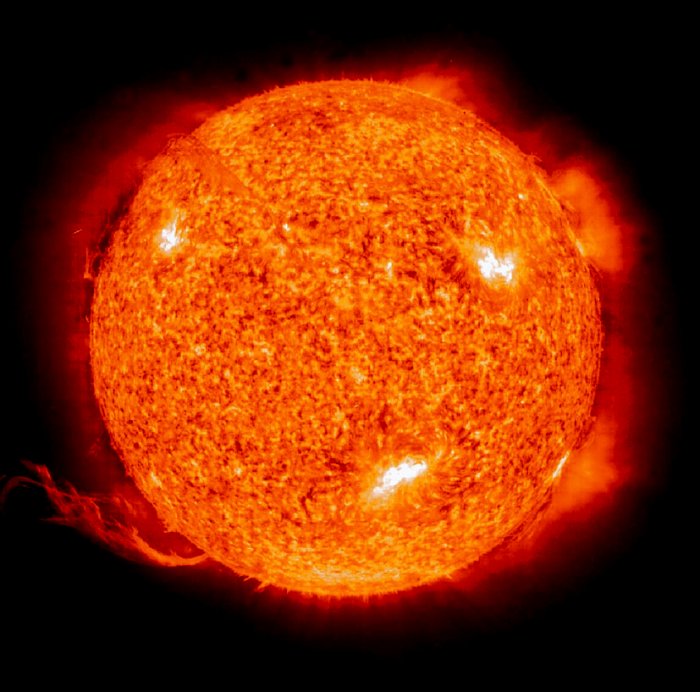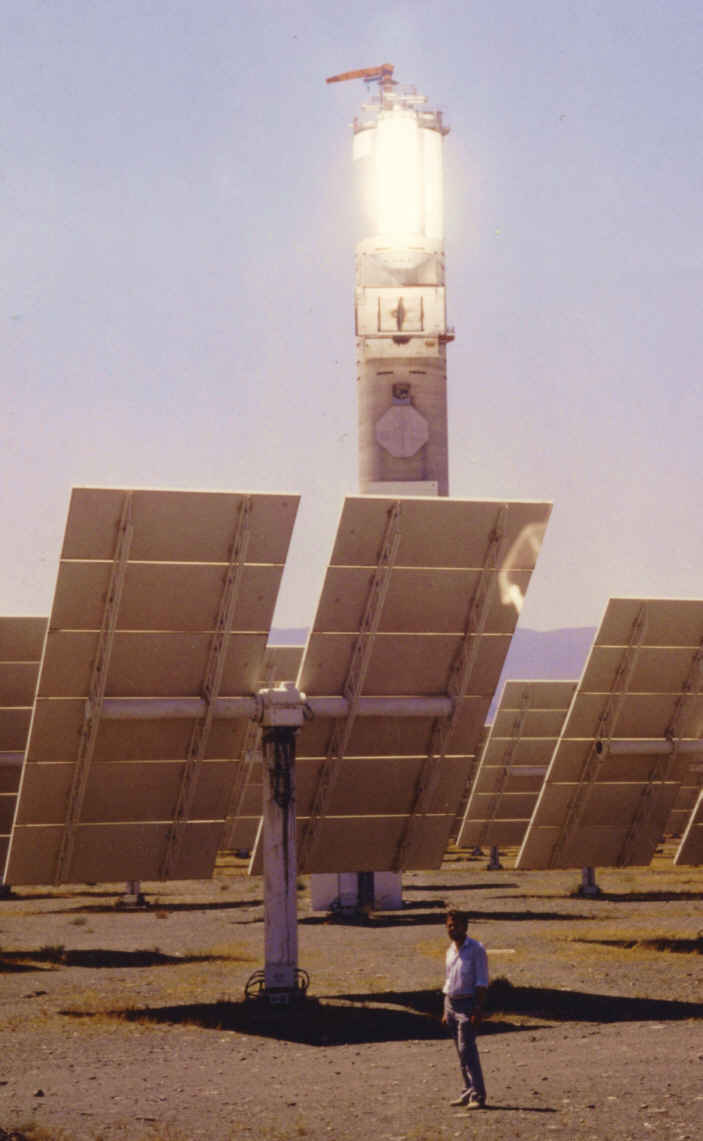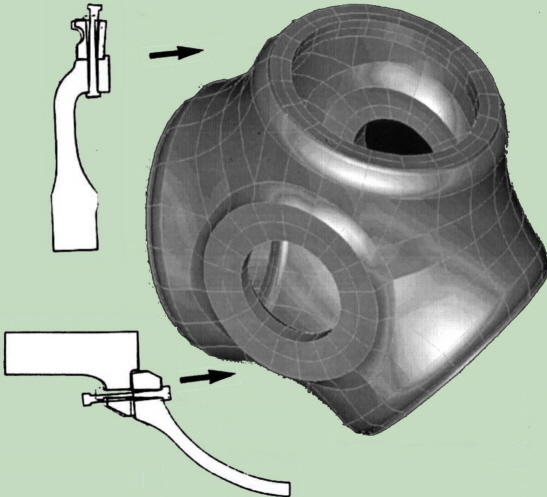During the only approximately 200 years, our western world has changed from predominantly agricultural societies, fuelled by wood and horses, into the modern industrial states powered by thousands power plants. This economic change was checked off by technological progress. The industrial revolution that transformed the world was guided not by economists, but by engineers such as James Watt, Werner Von Siemens, Edison, Tesla and Bill Gates which made the groundbreaking discoveries, with therefore the so-called industrial revolution have instigated. To do this they were their own entrepreneurs, developers, financiers, manufacturers and project managers.

The defining issue of our time - climate change - is an enormous technical challenge. This is discussed by many, by politicians, economists, but least of all by engineers, although they could better appreciate the backgrounds. It is therefore not surprising that at the end of all this discussion about the necessary steps as a substantial result, the question stand: how much will all this cost? If the above-mentioned gentlemen had put this question in the foreground, our development would have been in the sand.
It is also becoming more burdensome now, because we are hesitant and are not fully aware and equal to the challenge. The nature, the surroundings in which we endure has been courteous to us until now. She has granted us everything we need over and again and now she needs something from us. Because the resources we use are coming to an end, the waste that we are blowing in the air, throwing in the seas, nature can no longer cope, because we systematically weaken its potential to do so.
Even during the period of the previous development, we were scarcely aware of the significance of the energy for our wellbeing, prosperity and sustainability. The energy produces a pile in our surroundings, setting off from general terms, like illumination, electricity, high temperature and kinetic energy over their origins, like sun, oil, gas, coals, gases, wind, hydro -, wood and food up to the physical concepts, like gravity, chemical, nuclear etc.. With the word energy we describe even that something we today eats (energy food or drinks), and how we feel (to suffer wads of energy or to feel itself spent).
On the economic side, the energy is the largest industry on the planet with the sales of three trillions Euros annually, what is almost two times larger than the turnover of the food-processing industry.
However, the energy has become also our biggest worry. The OPEC-embargo of the 1970s caused a major recession of the world economy, the accidents, like Three Mile Iceland, and Chernobyl, has demonstrated the extreme danger posed by the human errors in the management of highly energy complex facilities. The blackouts in Europe and America have demonstrated how fragile are our electricity grids and how our whole existence, by the cancellations in the supply, can be lamb-put. Constantly rising prices in the supply through the steam, gas, fuels and the growing security of, through exactly the current type and the sources of the energy utilization, unavoidable climate-changes have evoked the questions whether we must not pay that everything very dearly.
As the demand for fossil fuels continues to grow in our increasingly industrialized world, these non-renewable (i.e. not unlimited) resources will begin to run out and prices will continue to rise. But, our current energy sources are not only limited, but also very dirty in their application. Even the present-day nuclear power stations, which are based on the fission, are a large environmental contaminant, if one takes into account that only 0.7% from the courtly love of weeded out uranium is utilized in the electricity production and the rest remains as high-radioactive waste, many times more active than the original material. While the "non-burned" fuel rods are only slightly radioactive and may be handled without special shielding, the "burnt" rods are shifted into a more active state, requiring the remote handling and shielding. These so named "wastes" can only be durably stored in a subterranean end bearing after a wear of time of approximately 45 years, as the heat-performance so far reduce. There, they must remain isolated from the environment for thousands of years. It does not sound more kindly if these "wastes" instead of stored becomes used to the production of atomic bombs. It appears also les more pleasant if these "wastes", instead of end stored, could be partly used for the production of nuclear bombs.

Something really new? Not at all, actually.
The decarbonisation of energy and the reduction of the energy intensity of economic activities are ubiquitous and almost universal. The historical transition from wood to coal and then to oil and to gas has resulted in the gradual decarbonisation of energy or to an increasing hydrogen to carbon ratio of global energy consumption. This also continuously reduces the proportion of average CO2 emissions per unit of energy consumed worldwide since 1860. Moreover, at the closing of this path, wave us nothing else as the pure hydrogen. Isn't the energy of the sun, together with its direct and indirect produces on Earth (wind, hydro..., not at least fossil fuels) based on hydrogen? However, more about that afterward.
Nevertheless, this main trend was all the time not without any resistance. Where the current reliance on coal in many developing countries illustrates the gap between the structure of primary energy supply and actual final energy needs that they have, in some of the large industrial countries the predominant interest in the enlarged profit impede the tangible engagement in this respect.
The establishment of less carbon-intensive and even carbon-free energy as major sources of energy is the main objective of the long-term transformation and structural change of the energy system. The largest single source of energy-related carbon emissions currently in use is coal, followed tightly by oil and at larger distance by gas. Consisting mostly of methane, natural gas has the highest hydrogen to carbon atomic ratio and the lowest CO2 emissions of all fossil fuels, emitting roughly half as much CO2 as coal for the same amount of energy. Natural gas is also desirable regionally because of its minimal emissions of other air pollutants. Regional assessments suggest that gas resources may be more abundant than was widely believed only a decade ago.
Natural gas is thus the bridge to the carbon-free combustible energy source of hydrogen, which should be at the end of the decarbonisation route. However, an obstacle in relation to the determination of hydrogen as an energy carrier makes the way in which it is extracted, which must also be carbon-free ("green" hydrogen)
Nevertheless, the importance of hydrogen for our existence is a lot, much more versatile.
YYes, but by the fusion. And this do not challenge the fact that our future depends exclusively on renewable energies. On the contrary, the origin of this new energy is nuclear fusion that takes place in the sun, thereby incidentally all other renewable energies, such as wind, photovoltaic, etc. produced and driven. The previous very primitive character of use of nuclear energy has absolutely nothing to do with this. The natural (Sun example) makes it in another way!

The sun is a giant
fusion reactor, which provides continuous high-energy radiation. Energy created by fusion drives the sun as it
is in all the stars in the universe. This energy source is alive when the lightest hydrogen atom in a very hot
(100 million degrees) ionized gas or plasma is mixed to produce helium wherein also the surplus energy is made.
Great gravitational pressure in the interior of stars allows keeping the matter in the form of plasma and the
necessary Temperature to produce. Gas ions overcome, by the collision at this high temperature, the repulsive
forces of the positive charge, so that the fusion of the atomic nuclei of the new substance takes place.
A series of reactions
that works starting with one proton or the core of the simplest hydrogen atom and ending
with α-particles that are the nuclei of helium atoms. A small amount of matter, which participates in the
reaction (m) releases according to the Einstein's equation ![]() a tremendous amount of energy:
a tremendous amount of energy:
This equation shows that the difference between the initial mass (mi) and the masses of end products (mf) defines the amount of energy released by the reaction ΔE.

Since the binding energy curve is considerably steeper on the side of fusion than on the side of Fission, we released in the event of the fusion significantly greater amount of energy than in the case of the current nuclear power sources based on uranium and so called nuclear fission of its atoms.
Almost all renewable energy sources and even the energy of fossil fuels are derived directly or indirectly from the sun. Solar radiation is vital for life on Earth, for the growth of plants and trees. Under his influence develops biomass, which moves around into a flammable fossil fuel in the course of millions of years. The knowledge that it can be applied directly to produce energy, fuel (biodiesel), even very useful chemicals have led to the industrial revolution that transformed the lives of people on the planet. However, the previous type of energy generation due the tremendous increase in the demand and harmful side effects (today perhaps one might be say "collateral damage") leads into the dead end.
Heat from the sun causes the differences in the heating of the air, which produce, in combination with Earth's rotation winds. The use of this energy produces no toxic waste, no irradiation, no acid rain, no greenhouse gases, no thermal discharges and no irreversible landscape changes.
The hydrology cycle within which water evaporates into the air and then comes in the shape of rainwater or snow on the earth again, where it is changed into fluid water, is also powered by the sunlight. Hydroelectric power plants use the power of falling water to make the electric stream.
Originally, there was in this respect a natural balance, which from the people and the enormous increase in the energy requirement was destroyed. The coal, which has been formed under the earth's surface, where it could do no harm, in millions of years, is dug up and burned in the shortest time. The product of this burning, rather than left in the solid ground is blown in the air that we breathe to survive. The so-loaded air also leaves traces to the water that forms in the atmosphere to rain. As a result of combustion, gases are produced, in particular sulpfur dioxide and nitrogen oxides, which mix with water in the atmosphere to form sulpfuric acid and nitric acid. The result is that each subsequent rain is a bit acidic. The clean rainwater does not arise, but the "sour" rain, which is harmful to living creatures.
Acid rain can cause damage to plants; in some cases seriously affect the growth of forests and can erode buildings and corrode metal objects. Perhaps the most important effect of anthropogenic (man-made) caused air pollution is the production and accumulation of high-toxin ozone at ground level, particularly in the urban areas. The effect shows a seasonal variation, which intensifies in the spring, having a diversity of sources. The most important are emissions of NO2 (nitrogen dioxide) and NO (nitrogen oxide). Photolysis of nitrogen dioxide by absorbing ultraviolet photons generated by solar radiation, leads to the production of ozone and even more nitric oxide what we perceive as smog. Smog makes it difficult for some people to breathe, and it reduces visibility. Although smog is a problem primarily in cities, nitrogen oxides can overcome a long distance before they react to produce ozone. This means that the pollution problems can include an entire region.
Changes in the atmosphere also cause that the stable climate, within which human civilization has flourished for thousands of years, is falling apart. The climate-related threats will be multiple increased by the climate change. Much local man will become against floods, droughts and heat waves increasingly powerless, whereby his food and water supply will be massively disrupted, so that millions will migrate in search of survival.
The challenge to a low-carbon economy is not only economically viable, politically wise and morally right; it is also a fantastic creative opportunity for the profession of engineers that build the real machinery and equipment. In addition, any one solution can only be programmed or digitalized, if the solution approach is discovered or known.
The distribution of power in today's business counteracts however. Some few have the greatest power (even their salaries are exorbitantly high) and the others have less and less power and their salaries remain accordingly more and more behind. They should manage their jobs quickly and easily under the applications of the existing framework (recipes, software and the like, thereby acting as a corset), creativity and not ordered (disruptive) Innovation are harmful. New and better products are no longer the primary objective, but money output to maximise.
A system that provides electric power, heat, gas and similar. The sources of energy reach from the classics as coal, gas and hydro - up to the modern nuclear and renewable energies.
Transportation system, which runs almost entirely on oil-based products, which are dependent on the import.
Clear, that the two systems are fundamentally different in character and therefore the possible solutions are very different. Independently from it, the essential corner points for a modern and future certain power supply in an industrial, political economy are renewable energies, energy efficiency and energy saving. Particularly the last two are belonging together for the two systems, despite the relevant solutions are different.

I could participate in the first large German projects in the fields of renewable energy sources, such as GAST (GAs cooled Solar Tower), GROWIAN and WKA-60 wind turbines. Particularly in the case of wind plants, this has contributed to an amazing development. On the occasion, the application of a beam model to the design of the screw connections on the flanges of the wind turbine blades and the large flange of the rotor take place.
The topic of climate-neutral mobility plays an important role (in the near future) in all sorts of mobility (buses, trucks, forklifts, cars, ships, aircraft, subs, etc.).. That means as well in air, rail, shipping as in road transport.

The innovative energy concepts for this century are thought to pursue the primary objectives: adequate and accessible energy sources and substantial improvement in environmental quality. The technical possibilities of improvements in road transport in order to reduce fuel consumption and the corresponding emissions have been long known: better engine combustion, hybrid vehicles that combine the internal combustion engines with electric motors or with electric motor only and biofuels, such as ethanol and biodiesel.
From today's perspective, unfortunately, the diesel engines are one of the most important sources of NO and NO2 pollution and are particularly incompatible for traffic in urban areas. The manufacturers had ignored this for many years, and the related rules went over in the deceitful manner. Although it was already known prior to 2010 to the public specialist that there are clear differences between real emissions and the measurements according to EURO emission limit values and standards, it was nothing improved by those responsible in this regard.
From today's point of view, there is no doubt that the transition to a sustainable transport sector in the medium term from internal combustion engines to hybrids, plug-in hybrids and biofuels and, in the long term, to purely electric vehicles (battery or fuel cell) should pass. For this purpose, the powerful electric motors, which release their power directly on the wheel axles of an automobile, are more efficient, more durable and much lighter than previously used internal combustion engines. They operate quietly and absolutely emission-free and, when supplied with the "green" electricity, climate-neutral. Maintenance and repair costs are significantly lower for pure electric vehicles, as electric cars have fewer wear parts.
In addition to electric cars with batteries, there is also fuel cell technology. Fuel cell electric vehicles can make a significant contribution to sustainable mobility solutions and efficient drive technologies. For many engineers, it is the crowning glory in terms of propulsion - quiet and powerful, and on the exhaust pipe runs for the environment harmless water vapor. However, this technology, which at first glance is efficient for ecology, currently has a major disadvantage: hydrogen is to be firstly placed in the fuel tank. In nature, there is no free hydrogen. The lion's share of hydrogen nowadays is made produced from the fossil fuel natural gas by removing the carbon atom. Only low-cost (generated by fusion?) current can, through the hydrogen production from the water, completely change that. Neutral compared to the environmental cycle "hydrogen from water to drive the vehicle and return from the vehicle as water" is therefore achieved. Only then will zero-emission hydrogen mobility become real and attractive for customers.
The energy supply of electric cars with batteries looks abundant easier. Because the electric grid is everywhere, you can even adjust any parking place for this. And that is perhaps the sole advantage of electric cars with batteries today. However, this advantage is not without hacking. Simple calculation shows that if the charging time is twenty times longer (60 min for cars with battery compared to 3 min to refuel hydrogen) you need twenty times more charging stations for the same number of cars (often refueling and the possible waiting times for the front man not taken into account). With today's few electric cars, that doesn't strike, but at a million? <(p>
However, the waiting time for charging, which you additionally ought to do far more usually, that is a problem for the users and not for the car manufacturer - just wonders, how long?
There are routes that can be driven purely by battery. However, this becomes difficult for longer distances, as you have to use very large and heavy batteries for long ranges. For this reason, a higher market share is also expected for passenger transport for fuel cell buses within the future. In off-road transport, such as rail and ship transport, the fuel cell has clear advantages.
Arguments in favors of the fuel cell in road transport are range, adaptability, refueling time and their applicability for heavier cars and trucks (more power). Heating from the inside of the vehicle is carried out, similar to conventional vehicles, by using fuel cell waste heat. In contrast, in the case of battery vehicles, heating is only possible via the battery. This, together with the loss of battery capacity during prolonged cold exposure throughout low ambient temperatures, can considerably reduce the range.
The structure of the two, the electric battery and the fuel cell is very similar. The essential components are two electrodes separated by an electrolyte that allows ion transport between the two. The choice of one or the other as the sole supplier of electric motors is unlikely to be taken in the long term because the two complement one other in terms of their characteristics in operation. This means that pure battery cars will not be the final answer to our mobility needs of tomorrow, but the fuel cell will also not do so without the battery.
The existence of these two solutions is similar to that of internal combustion engines, where there are petrol and diesel-motors and covers entire field of application. Even if these areas overlap more typically, they exist confidently, depending on their typical characteristics and separated from another. This could even be the case with the battery and fuel cell if there is not a decisive difference: they can be combined as a single power equipment in a meaningful way. And this combination can lead to an optimal result because the two technologies have the strength wherever the weaknesses of the others lie. A combination of the two could be the ideal solution.
The rail sector is already much more advanced in this area today than cars. The standard drive concept has long been based on the electric motor, whose traction current is sourced from the overhead line. Nevertheless, in Germany, around 40 percent of the railway lines are not (yet) electrified, which does not allow a bridge between the separate electrified segments for electric trains. In the absence of suitable alternatives, many local transport lines are presently using "dirty" diesel multiple units, which also undermines the railway's reputation for being particularly environmentally friendly.
A train powered by a battery or fuel cell might solve this problem by eventually allowing it to run independently on conventional electrified routes as well as independently. This leads to a highly flexible train, which can run on different parts of the railway network. Of course, the railways can deal with one of the key problems - the problem of supplying hydrogen - more easily than others can.
The world's first hydrogen fuel cell train was developed and tested by the French company Alstom. With a filling of hydrogen, this train comes about 1000 kilometers. Battery trains, on the other hand, have a range of only about 40 to 100 kilometers, depending on the state of the art of battery technology. It says much?
In the field of ship transport, fuel cells are more appropriate for most applications. Batteries yielded interesting results, but these were solely possible on the smaller ships and could only offer enough energy for a trip. Longer endurance missions promoted fuel cell systems because the fuel cell remains unchanged even at the level required for performance. For battery systems, the total size of the battery system must be increased depending on the duration, although the power level remains unchanged.
Because the specific energy of hydrogen is nearly three times that of marine liquid fossil fuels, even taking into account the additional mass of the hydrogen tank, the fuel system on board of a hydrogen-powered ships will be considerably lighter than one powered by liquid fossil fuel. This can lead to lower energy consumption and/or higher charging capability.
Consequently, if hydrogen becomes the fuel of choice for heavy carrying vehicles (trucks), shipping, rail loading and aviation, the new round for deciding between battery and fuel cell regarding passenger cars, likewise for their manufacturers is pre-programmed.
And the decarburization of energy will thus achieve one of the foremost relevant goals.
Return to top